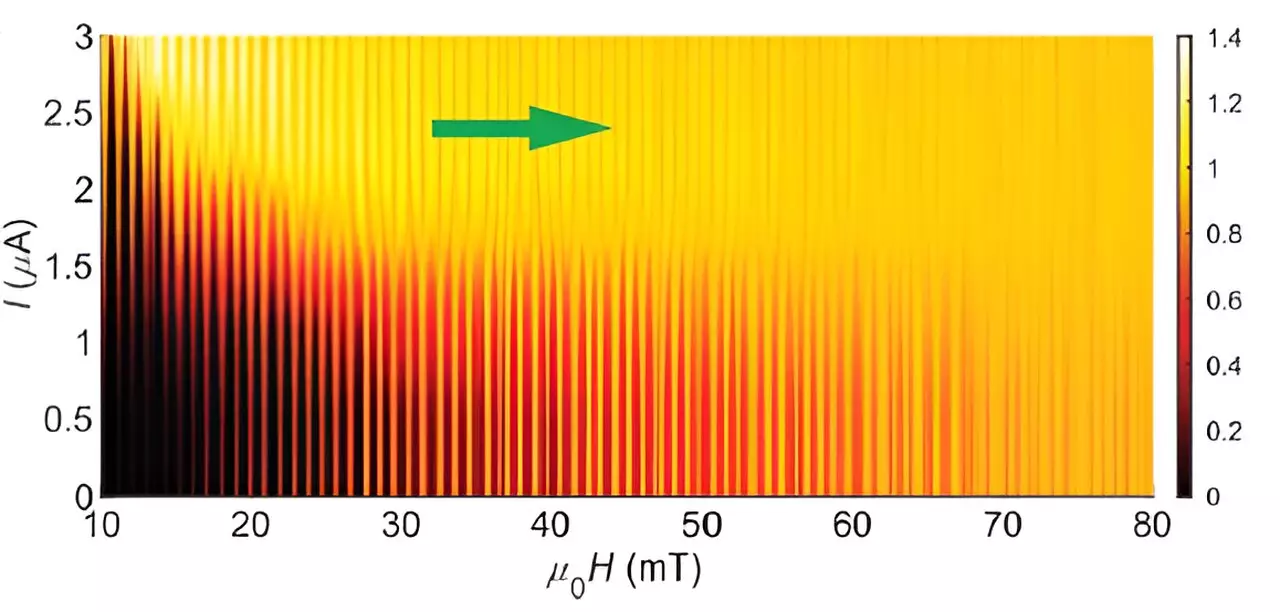Topological materials represent a fascinating category of materials that exhibit unique physical properties. This distinctiveness primarily arises from the behavior of their electronic wavefunctions, which may be described as knotted or twisted structures. The significance of this knotted state lies in the interaction between the topological material and its surrounding environment; when these materials interface with other substances, their wavefunctions must transition or “unwind.” This transformation leads to special electronic states at the edges of the materials, collectively referred to as “edge states.” Essentially, while the bulk of the material adheres to typical superconducting behaviors, the edge exhibits distinct characteristics, enabling an intriguing form of electron behavior.
Molybdenum telluride (MoTe2) serves as a prime example in the study of topological superconductors. This material illustrates the peculiar phenomenon where both its central mass and edge can support superconductivity, yet they operate under different mechanics. The analogy of two bodies of water that do not mix highlights this scenario effectively; despite both being superconductors, the edge and bulk display disparate properties. Recent studies, particularly one published in *Nature Physics*, have delved into the behavior of edge currents within MoTe2, revealing that these edge supercurrents exhibit remarkable resilience against variations in the “glue” that facilitates the pairing of electrons, pivotal to electrical conductivity in superconductors.
Understanding the mechanism of electron pairing is critical; these paired electrons are what allow electricity to flow seamlessly within superconducting materials. Topological superconductors, including those that encompass anyons—exotic particles possessing unique characteristics—could mark a significant advancement in quantum technologies if validated by further research. Unlike standard electrons, anyons retain a memory of their spatial positions, permitting arrangements that fortify quantum operations and reduce error likelihood.
One of the most important insights about topological superconductors is their edge supercurrents, which flow distinctly along their peripheries. These currents open avenues for manipulating anyons, thus laying the groundwork for innovative quantum technology applications and energy-efficient electronic systems. When exposed to a magnetic field, the supercurrents in MoTe2 reveal a complex behavior: while the bulk supercurrents oscillate, the oscillations at the edges occur at a markedly faster rate. This differential behavior is not merely an observation; it is an essential indicator of the inherent differences in the physical properties of the edge compared to the bulk.
To enhance the superconducting properties of MoTe2, researchers have implemented niobium (Nb) as an additional layer. The rationale for this strategy lies in niobium’s superior pair potential, which increases the interaction effects within MoTe2 by “spilling” into its structure. However, this integration does not occur without complications. The study outlined the resulting incompatibilities between the pair potentials of Nb and MoTe2. The interactions create distinct scenarios for edge electrons, whereby their wavefunction alternates between the two pair potentials, leading to observable variations in superconducting properties.
A fascinating finding from the studies was the noise associated with edge supercurrents. When there is a disparity between the edge pair potential and that of bulk MoTe2, the resulting oscillations are more chaotic or “noisy.” Conversely, when both potentials align, the oscillations exhibit almost no noise, suggesting that the edge behavior can be a reliable indicator of superconducting electron dynamics within these topological superconductors.
The exploration of topological superconductors, particularly through the lens of materials like MoTe2, is shedding light on potential breakthroughs in quantum computing and advanced electronic systems. As this field evolves, a deeper understanding of pair potentials and edge dynamics may not only unravel fundamental scientific questions but also herald a new era of technologies that harness the unique properties of these remarkable materials. The implications of such advancements are profoundly promising, opening channels for innovation in how we approach both computing and energy efficiency.


Leave a Reply